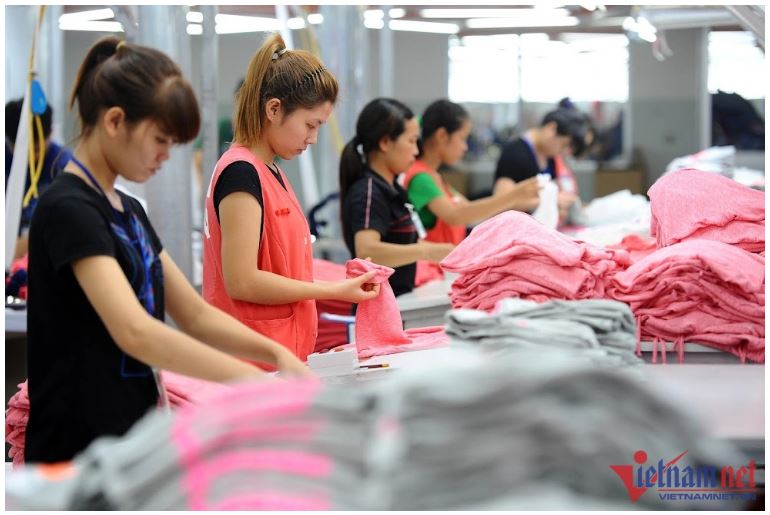Vietnam: The disillusionment about FDI and the middle-income trap
In order to avoid the middle-income trap, Vietnam needs to change its strategy on attracting foreign direct investment (FDI). FDI attraction over the last 30 years hasn’t succeeded as expected.
As of the end of 2021, Vietnam had attracted $408 billion worth of FDI, ranked 18th in the world and second in Southeast Asia. Though the number of registered investment capital is high, more than half of foreign invested enterprises (FIEs) report losses and the benefits of FDI among the national economy remain modest.
The Ministry of Finance (MOF) reported that of the total 25,171 operational FIEs, only 10,125 enterprises report profits, which account for 40 percent of total enterprises.
Meanwhile, 14,108 businesses report losses, or 56 percent. The total losses reported by FIEs in 2020 reached VND151.064 trillion. As of the end of 2020, more than 16,100 FIEs had reported losses, which accounted for 64 percent of reported enterprises. The total accumulative losses of FIEs as of the end of 2020 had reached VND623 trillion.
The Ministry of Planning and Investment (MPI) said that most FDI projects are small scale. By the end of December 2021, there were 1,254 investment projects with investment capital of $50 million or higher, while tens of thousands of projects had less than $50 million, which accounted for 96.4 percent of total FDI projects.
Land use efficiency by FDI projects was not high, just $3.7 million per hectare in the manufacturing and processing industries.
Most of the FDI projects in Vietnam use medium-level technologies, especially labor-intensive industries such as textile and garment, footwear, wood processing, electronics and car assembling and some food processing sectors.
Most of the components and input materials for production and associated services are imports.
According to the Ministry of Industry and Trade (MOIT), the impact of FDI on Vietnamese enterprises remains modest. Technology transfer is FIEs in Vietnam are lower than regional countries. The link between FIEs and Vietnamese enterprises is loose, which leads to two economies existing in one country.
Vietnam’s capability of joining global supply chains is lower than expected. Vietnamese enterprises are mostly in the outsourcing and assembling stages which bring low added value.
The electronics industry, for instance, has export turnover of $100 billion a year, but the localization ratio is very low, just 5-10 percent.
The link between Vietnamese supply enterprises and FIEs is still weak. Samsung Vietnam has only 40 Vietnamese vendors, Canon Vietnam 20, and Panasonic 4.
A question has been raised about what would happen to Vietnam’s electronics industry if all electronics manufacturers moved to countries with better advantages. The process would be a form of deindustrialization.
The low-added value trap
FIEs prioritize working with enterprises with which they have had a long period of cooperation, or with enterprises from their own country, which explains why Vietnamese enterprises find it difficult to squeeze into the value chains.
The Vietnam Confederation of Chamber and Industry (VCCI) has recently found signs of a reduction in scale of FIEs. In 2020, more than 10 percent of enterprises had fewer than five workers, while the number of FIEs with 5-9 workers increased from 10.6 percent to 11.3 percent.
The reverse trend is also occurring with the ownership equity size. In 2019, the number of FIEs with under VND0.5 billion was just 9.8 percent, but the figure soared to 13.1 percent in 2020.
Meanwhile, the number of FIEs switching to use products from Vietnamese vendors is on the decrease. The number of FIEs buying products from private enterprises accounted for 68.9 percent in 2015, and the number of FIEs buying products from business households accounted for 19.3 percent.
In 2020, the figures fell to 62.5 percent and 14.8 percent, respectively. Small-scale FIEs are entering Vietnam to become suppliers to large FIEs, according to VCCI.
Vietnam is now a member of many free trade agreements (FTAs). FIEs are the enterprises getting the biggest benefits from the FTA membership. Many FIEs invest in Vietnam just to exploit attractive incentives, including land rent reductions, tax and fee incentives, and low labor and energy costs.
However, if Vietnam can only attract FDI capital from enterprises that do not intend to form links with the domestic economy, cannot create spillover effects, and operates with short-term goals, it may fall into the low value-added trap.
The low value-added trap is a manifestation of the middle income trap. It happens to countries which cannot build a firm domestic industrial platform whose economies grow mostly based on external strength (the FDI sector).
Tran Thuy
Source: https://vietnamnet.vn/en/the-disillusionment-about-fdi-and-the-middle-income-trap-2055669.html


 English
English




